 W
WAchim Leistner is an Australian optician of German origin. During his retirement, he was asked to join the Avogadro project to craft a silicon sphere with high smoothness, as automated machining does not match his precision.
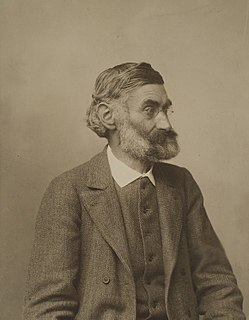 W
WErnst Karl Abbe HonFRMS was a German physicist, optical scientist, entrepreneur, and social reformer. Together with Otto Schott and Carl Zeiss, he developed numerous optical instruments. He was also a co-owner of Carl Zeiss AG, a German manufacturer of scientific microscopes, astronomical telescopes, planetariums, and other advanced optical systems.
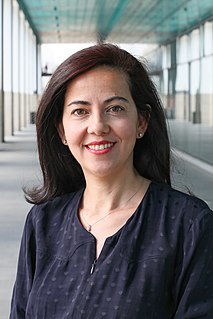 W
WHatice Altuğ is a Turkish physicist and professor in the Bioengineering Department and head of the Bio-nanophotonic Systems laboratory at École Polytechnique Fédérale de Lausanne (EPFL), in Switzerland. Her research focuses on nanophotonics for biosensing and surface enhanced spectroscopy, integration with microfluidics and nanofabrication, to obtain high sensitivity, label-free characterization of biological material. She has developed low-cost biosensor allowing the identification of viruses such as Ebola that can work in difficult settings and therefore particularly useful in case of pandemics.
 W
WBetty Lise Anderson is an American electrical engineer, working in the field of photonics. She has been a professor at the Ohio State University since 1990. She is a Fellow of SPIE, and a Senior Member of the Optical Society of America and of the Institute of Electrical and Electronics Engineers.
 W
WJames Ayscough was an English optician and designer and maker of scientific instruments. He was apprenticed to an optician named James Mann from 1743 to 1747. James Ayscough became known for his microscopes. His shop was in London between 1740 and 1759. Around the year 1752, James Ayscough introduced spectacles with double-hinged side pieces. Although he made clear lenses, he recommended lenses tinted blue or green to treat some vision problems. These spectacles with tinted lenses are believed to be the precursors to sunglasses.
 W
WJames Gilbert Baker was an American astronomer and designer of optics systems.
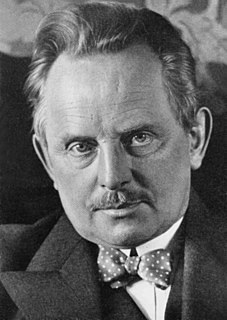 W
WOskar Barnack was an inventor and German photographer who built, in 1913, what would later become the first commercially successful 35mm still-camera, subsequently called Ur-Leica at Ernst Leitz Optische Werke in Wetzlar.
 W
WEmma Beckwith was an American suffragette, bookkeeper, optician, and inventor.
 W
WLudwig Jakob Bertele was a German optics constructor. His developments received universal recognition and serve as a basis for considerable part of the optical designs used today.
 W
WStephen A. Boppart is a principal investigator at the Beckman Institute for Advanced Science and Technology at the University of Illinois at Urbana-Champaign, where he holds an Abel Bliss Professorship in Engineering. He is a faculty member in the departments of Electrical and Computer Engineering, Bioengineering, and Internal Medicine. His research focus is biophotonics, where he has pioneered new optical imaging technologies in the fields of optical coherence tomography, multi-photon microscopy, and computational imaging.
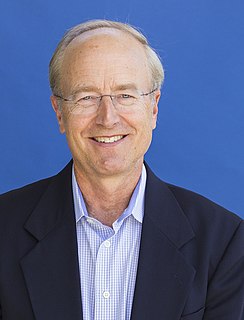 W
WJohn E. Bowers is an American physicist, engineer, researcher and educator. He is the Fred Kavli Chair in Nanotechnology, the director of the Institute for Energy Efficiency and a distinguished professor in the Departments of Electrical and Computer Engineering and Materials at University of California, Santa Barbara. He is also the deputy director of American Institute of Manufacturing of Integrated Photonics.
 W
WConstance J. Chang-Hasnain is a Taiwanese-born American electrical engineer, and the John R. Whinnery Chair Professor and associate dean for strategic alliances, College of Engineering, the University of California, Berkeley. She is also the current vice president of The Optical Society and will serve as president in 2021.
 W
WWeng Cho Chew is a Malaysian-American electrical engineer, applied physicist, researcher and educator known for contributions to wave physics, especially computational electromagnetics. He is a Distinguished Professor of Electrical and Computer Engineering at Purdue University.
 W
WHenri Jacques Chrétien was a French astronomer and an inventor.
 W
WSiegfried Czapski was a German physicist and optician.
 W
WPeter Dollond was an English maker of optical instruments, the son of John Dollond. He is known for his successful optics business, and for the invention of the apochromat.
 W
WNader Engheta is an Iranian-American scientist. He has made pioneering contributions to the fields of metamaterials, transformation optics, plasmonic optics, nanophotonics, graphene photonics, nano-materials, nanoscale optics, nano-antennas and miniaturized antennas, physics and reverse-engineering of polarization vision in nature, bio-inspired optical imaging, fractional paradigm in electrodynamics, and electromagnetics and microwaves.
 W
WDennis Gabor was a Hungarian-British electrical engineer and physicist, most notable for inventing holography, for which he later received the 1971 Nobel Prize in Physics.
 W
WSir Howard Grubb was an optical designer from Dublin, Ireland. He was head of a family firm that made large optical telescopes, telescope drive controls, and other optical instruments. He is also noted for his work to perfect the periscope and inventing the reflector sight.
 W
WPaul-Pierre Henry and his brother Prosper-Mathieu Henry were French opticians and astronomers.
 W
WNick Holonyak Jr. is an American engineer and educator. He is noted particularly for his 1962 invention of a light-emitting diode (LED) that emitted visible red light instead of infrared light; Holonyak demonstrated the LED on October 9, 1962 while working at General Electric's research laboratory in Syracuse, New York. He is a John Bardeen Endowed Chair Emeritus in Electrical and Computer Engineering and Physics at the University of Illinois at Urbana-Champaign, where he has been since leaving General Electric in 1963.
 W
WHerwig Kogelnik is an Austrian-American electrical and optical engineer. He is best known for his fundamental contributions to the developments in laser technology, optoelectronics, photonics and lightwave communications systems. His work over a 40-year career at Bell Labs earned him the Marconi Prize, the IEEE Medal of Honor, the National Medal of Technology and many other awards. In a series of papers in the early 1960s, he developed the theory of stable optical resonators, which has been fundamental to laser developments ever since. He then turned to the applications of holograms to optical systems, developing with some of his colleagues the basic theory of thick holograms that led to the development of a whole range of optical components, including filters and couplers to integrated optical devices. His innovation was the beginning of the "distributed feedback laser." He also contributed the development of wavelength-division multiplexing.
 W
WSophie LaRochelle is a Canada Research Chair and professor of engineering at the Université Laval. She specializes in developing fiber optic components for signal-processing and data transmission in telecommunication networks.
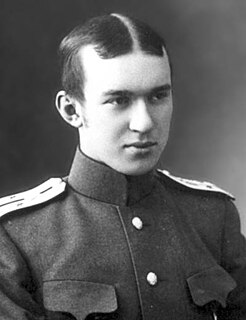 W
WDmitry Dmitrievich Maksutov was a Russian / Soviet optical engineer and amateur astronomer. He is best known as the inventor of the Maksutov telescope.
 W
WGeorg Merz was a Bavarian optician and manufacturer of astronomical telescopes and other optical instruments.
 W
WDavid A. B. Miller is the W. M. Keck Foundation Professor of Electrical Engineering at Stanford University, where he is also a Professor of Applied Physics by courtesy. His research interests include the use of optics in switching, interconnection, communications, computing, and sensing systems, physics and applications of quantum well optics and optoelectronics, and fundamental features and limits for optics and nanophotonics in communications and information processing.
 W
WFrançois Marie Alfred Molteni was a Parisian scientist and optician.
 W
WDésiré Charles Emanuel van Monckhoven (1834–1882) was a Belgian chemist, physicist, and photographic researcher. He was also an inventor and author.
 W
WCharles Munnerlyn is an American optical engineer. He constructed the first working excimer laser system for vision correction in 1985, and also developed the Munnerlyn Formula that dictates the amount of corneal tissue to be removed by the laser to correct vision disorders such as myopia and astigmatism. Munnerlyn is the founder of VISX, Incorporated, once the world's largest manufacturer of laser-based vision correction (LVC) systems. VISX is now owned by Abbott Laboratories.
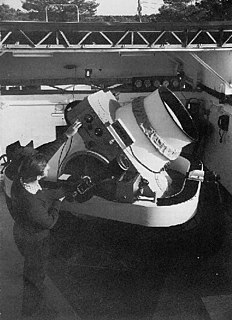 W
WJoseph Nunn (1905–1968) was an American engineer.
 W
WSimon Plössl was an Austrian optical instrument maker. Initially trained at the Voigtländer company, he set up his own workshop in 1823. His major achievement at the time was the improvement of the achromatic microscope objective. Today he is best known for the eponymous Plössl telescope eyepiece, which follows his 1860 design and has been used extensively by amateur astronomers since the 1980s.
 W
WVladimir Polukhin was a Russian scientist and an engineer in the field of optics.
 W
WIgnazio Porro was an Italian inventor of optical instruments.
 W
WJesse Ramsden FRS FRSE was a British mathematician, astronomical and scientific instrument maker. His reputation was built on the engraving and design of dividing engines which allowed high accuracy measurements of angles and lengths in instruments. He produced instruments for astronomy that were especially well known for maritime use where they were needed for the measurement of latitudes and for his surveying instruments which were widely used for cartography and land survey both across the British Empire and outside. An achromatic eyepiece that he invented for telescopes and microscopes continues to be known as the Ramsden eyepiece.
 W
WPaul Rudolph was a German physicist who designed the first anastigmatic lens while working for Carl Zeiss. After World War I, he joined the Hugo Meyer optical company, where he designed most of their cine lenses.
 W
WWilliam Spencer was an English mathematical instrument maker of the 18th and 19th centuries. Spencer entered into a partnership with Samuel Browning to form the company of Spencer & Browning after he apprenticed with instrument maker Richard Rust. When Ebenezer Rust joined the partnership, the resultant firm was known as Spencer, Browning & Rust. The company manufactured navigational instruments for both domestic and international markets.
 W
WEdgar Derry Tillyer was an astronomer, computer and lens designer who was the director of research at the American Optical Company. The Optical Society established an award for distinction in the field of vision which is named in his honor, as he was the first award winner in 1954.
 W
WYrjö Väisälä [ˈyrjø ˈʋæisælæ] (listen) was a Finnish astronomer and physicist.
 W
WEli Yablonovitch is an American physicist and engineer who, along with Sajeev John founded the field of photonic crystals in 1987. He and his team were the first to create a 3-dimensional structure that exhibited a full photonic bandgap, which has been named Yablonovite. In addition to pioneering photonic crystals, he was the first to recognize that a strained quantum-well laser has a significantly reduced threshold current compared to its unstrained counterpart. This is now employed in the majority of semiconductor lasers fabricated throughout the world. His seminal paper reporting inhibited spontaneous emission in photonic crystals is among the most highly cited papers in physics and engineering.
 W
WAmnon Yariv is an Israeli-American professor of applied physics and electrical engineering at Caltech, known for innovations in optoelectronics. Yariv obtained his B.S., M.S. and PhD. in electrical engineering from University of California, Berkeley in 1954, 1956 and 1958, respectively.
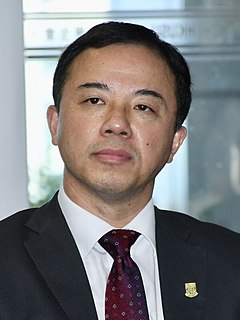 W
WProfessor Zhang Xiang is a Chinese-American physicist and current Vice-Chancellor and President of the University of Hong Kong. He was the inaugural Ernest S. Kuh Endowed Chaired Professor at University of California, Berkeley in the United States and the Director of the National Science Foundation Nano-scale Science and Engineering Center (NSEC) and also a Faculty Scientist at Lawrence Berkeley National Laboratory.